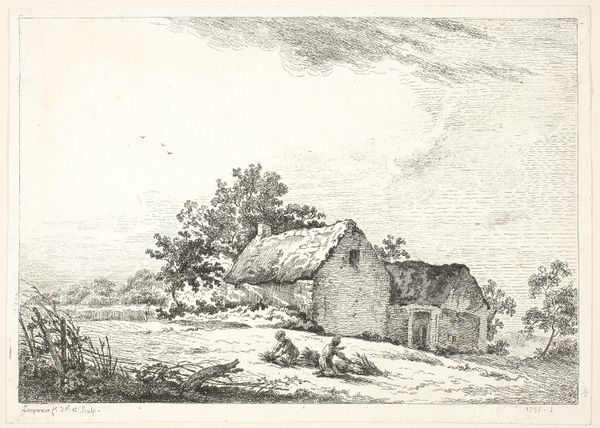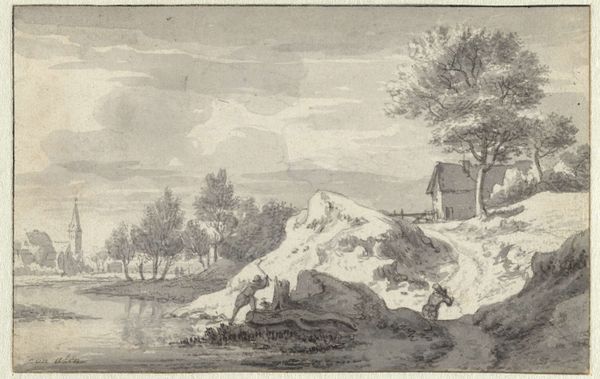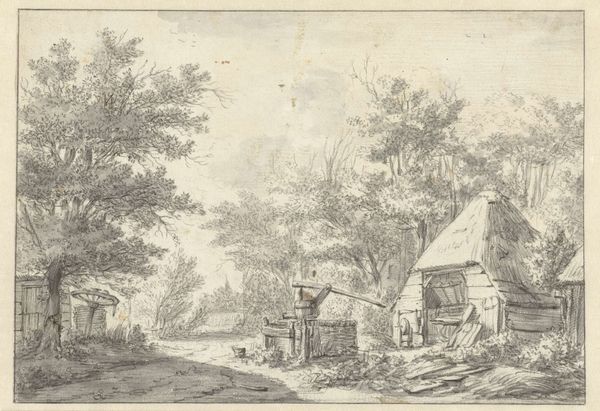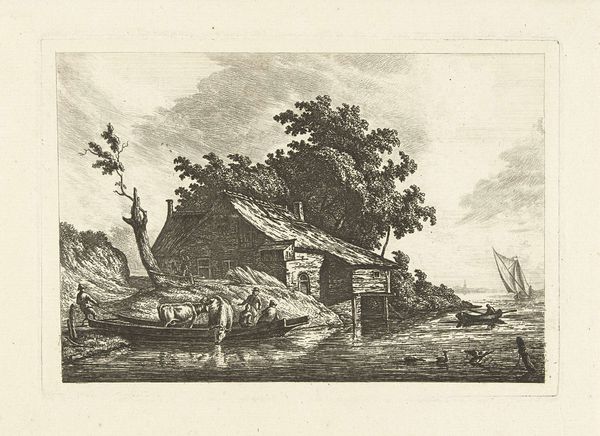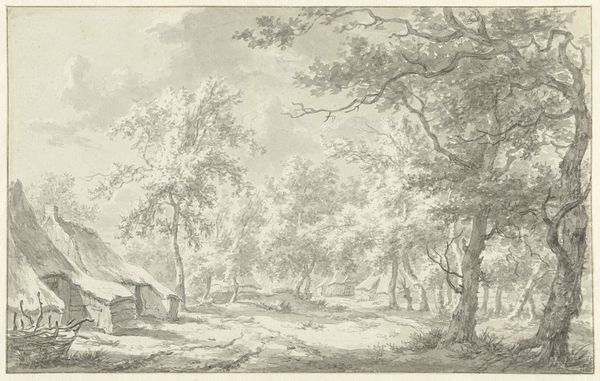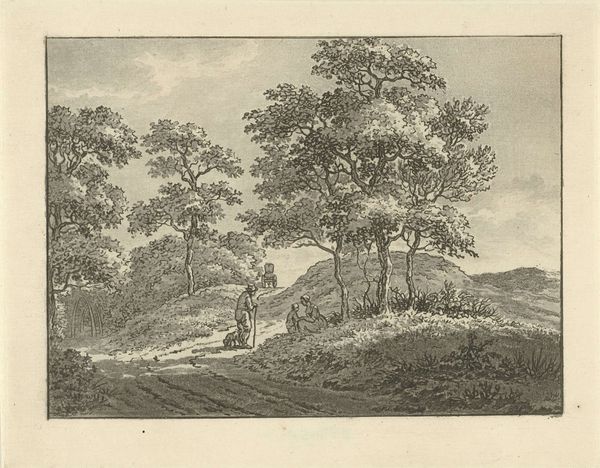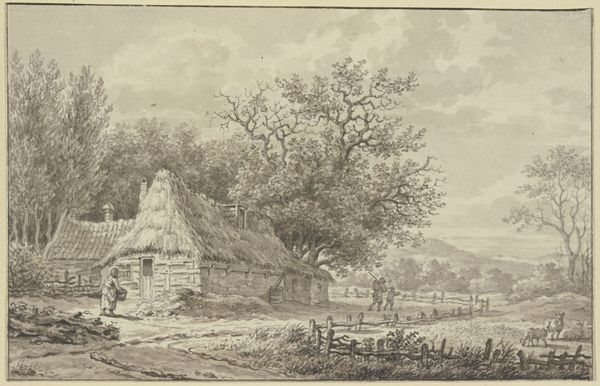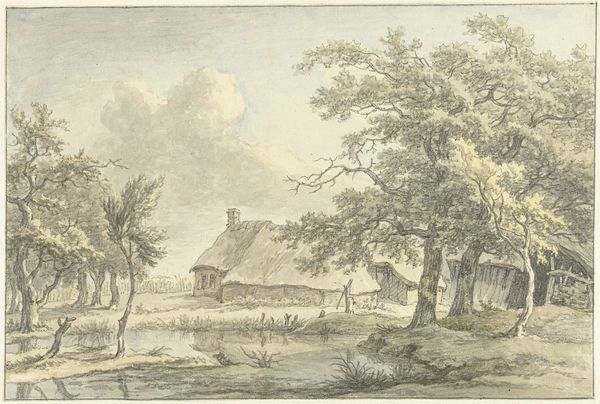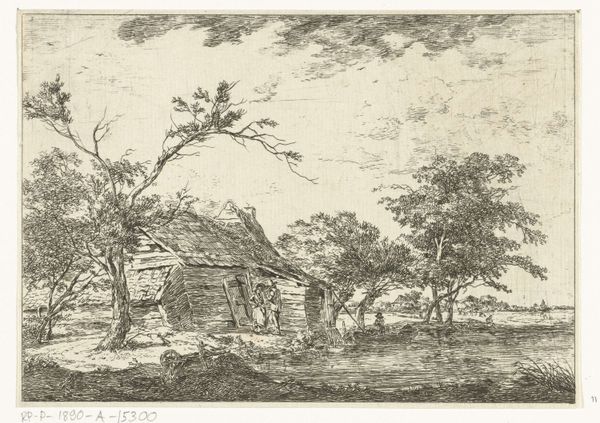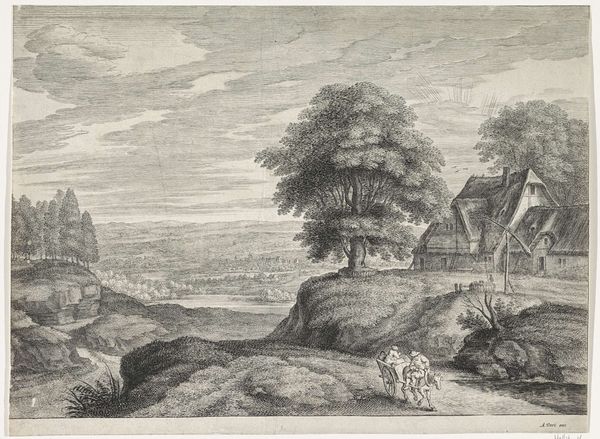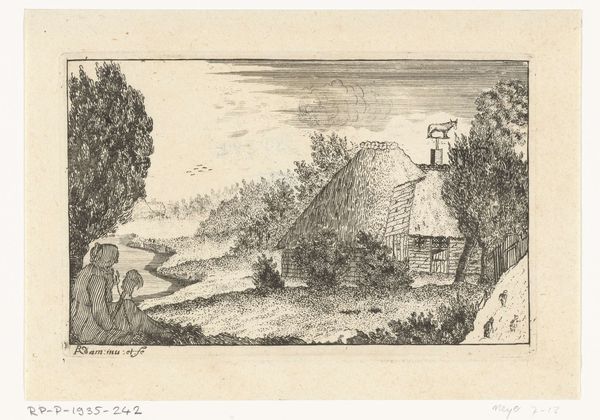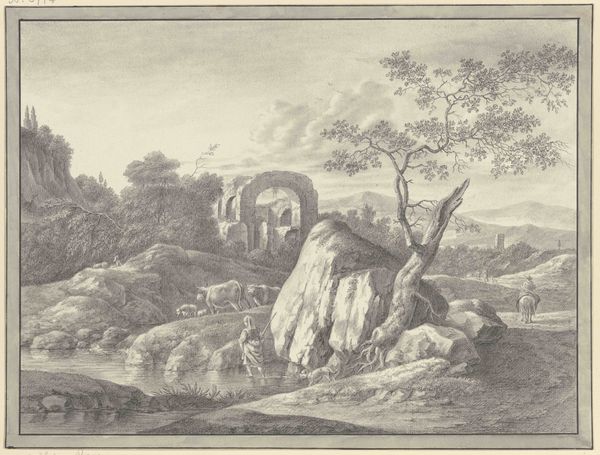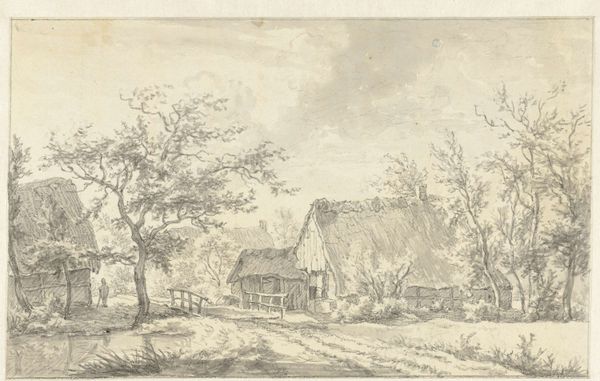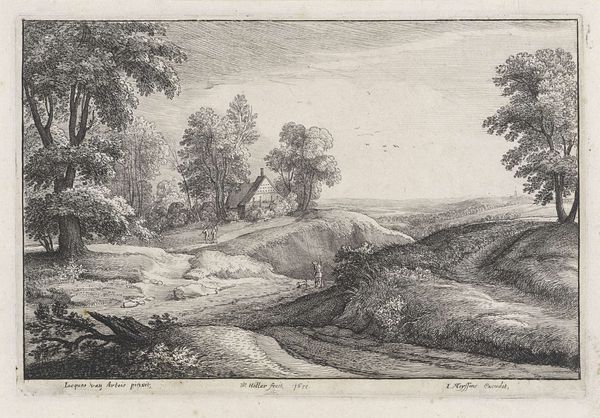
print, engraving
# print
#
landscape
#
engraving
#
realism
Dimensions: height 233 mm, width 358 mm
Copyright: Rijks Museum: Open Domain
Curator: This is “View on a Canal with an Angler,” a print by Hermanus van Brussel, created between 1773 and 1815. What are your initial thoughts? Editor: It has a sort of quiet, almost melancholy stillness about it. The grey tones really set that mood. The lone figure in the boat adds to that sense of solitude. Curator: It’s an engraving, so the artist would have been carefully manipulating lines on a metal plate to achieve those tones. I'm struck by the detail, the way the artist captured the texture of the wood on the buildings and the layers of the haystack. Think of the physical labor, the artisan expertise necessary to make this. Editor: Right, but even within that labor, there’s a powerful sense of the iconic. Haystacks often symbolized plenty and the bounty of nature in art. But here, the lone haystack has a kind of stoic feel; maybe it signifies endurance, persistence of older traditions within landscape imagery. The angler could be a symbol, too. Curator: How so? Fishing represents both sustenance and leisure. It can signify someone simply working to eat, or perhaps having the privilege of downtime. The fact that it's printed changes its whole socioeconomic dimension. This image could have been mass produced. Think of the many people exposed to it versus an original painting. Editor: I'm still taken by the recurring symbols of the human and nature represented via the angler. The boat might evoke ideas around journeys, movement between worlds. Think about how the canal is both separating and joining. And look, too, how all this detailed labour translates to the cultural realm as art. Curator: Yes, those connections are key! An object like this circulates within a society. Understanding those material routes allows us to really understand both production, appreciation, the very social construction of an art form, and, crucially, who gets to participate. Editor: Examining symbols through history allows insight into the shifting and constant ways humanity has attempted to create meaning. Curator: Absolutely, understanding its means of production, and social existence opens up questions about value and meaning across its lifespan. Editor: Exactly, through its symbolism we can learn what to think, feel, and know when coming face-to-face with similar subjects throughout time.
Comments
No comments
Be the first to comment and join the conversation on the ultimate creative platform.
